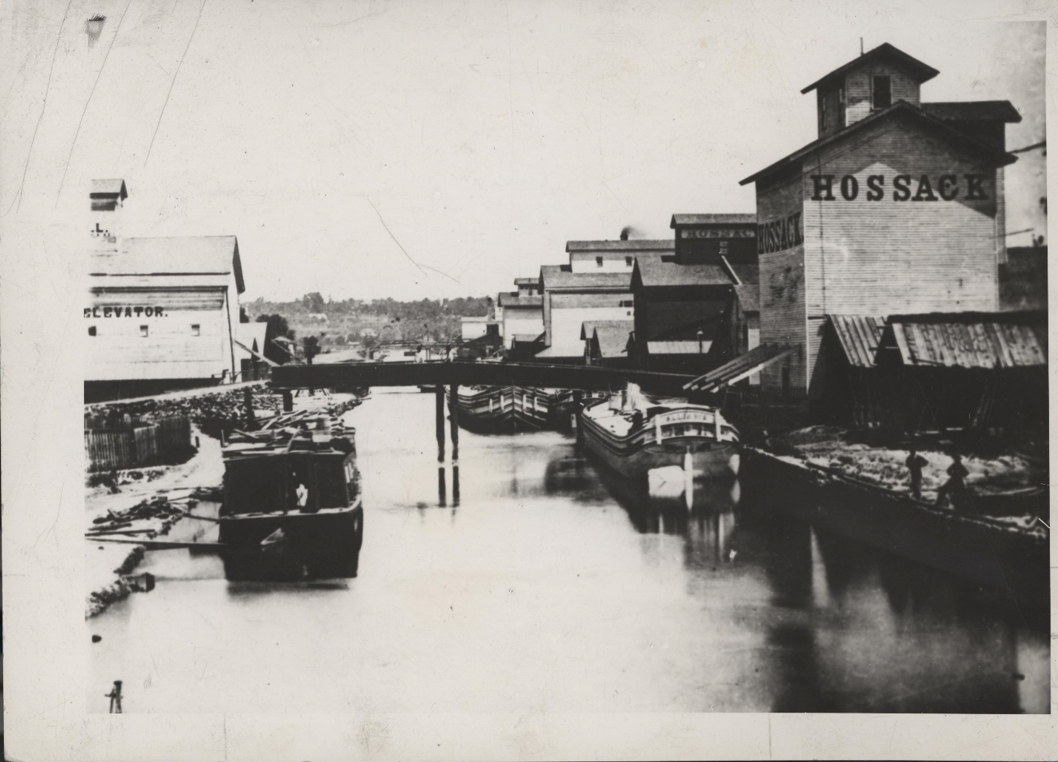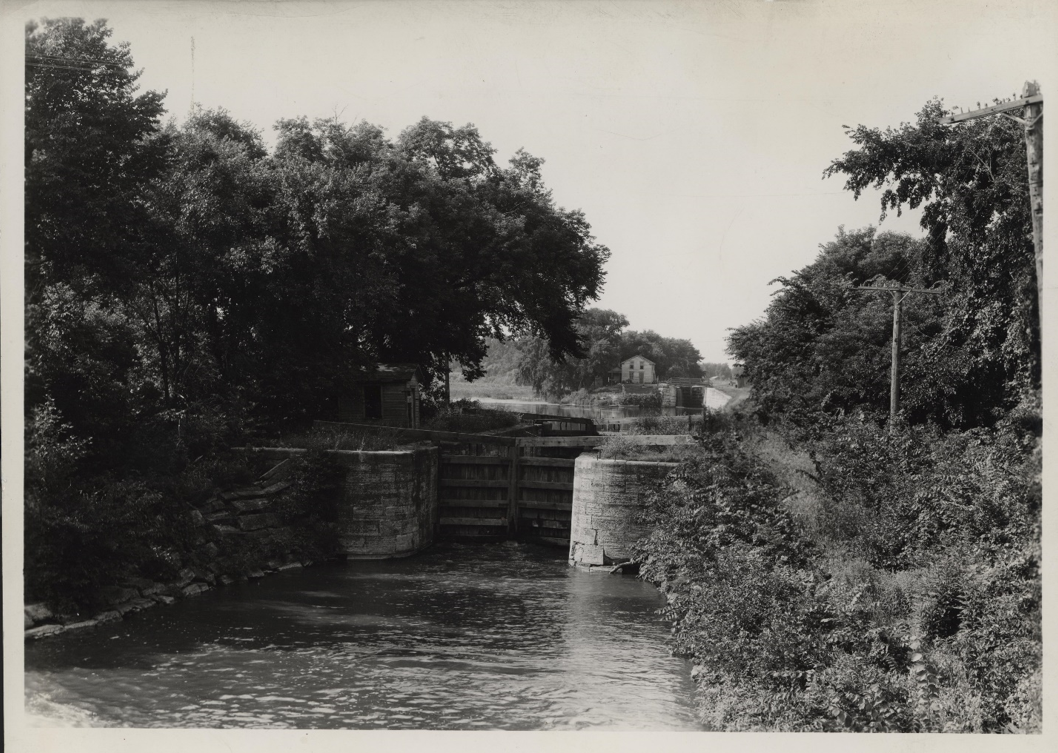By Jacob K. Friefeld
With so many passengers in so confined a space, no wonder that on the following morning I should awake with a severe headache, the effect of the heated nauseous vapours which surrounded us. Not a window was permitted to be opened; I made various endeavors to break through this rule during the night, but every window within my reach was fastened down. This, however, may be considered but a wise precaution; for the malaria from the surrounding marshy land, and especially from Mud Lake, distant about fifteen miles from Chicago, which we passed within a very short distance, is very dangerous.
- Arthur Cunynghame, a British traveler on the Illinois and Michigan Canal in 1850. From A Glimpse at the Great Western Republic.
Although it may not be evident in the quotes above, travel on the Illinois and Michigan Canal was actually a modern luxury. When it opened on April 10, 1848, the canal connected the Great Lakes to the Mississippi River and changed travel and trade in the Midwest.
Nineteenth-century Americans lived in an emerging technological and industrial order. Many hoped this modernity would bring about a golden age for humanity that would lift burdens on the wings of prosperity. The Erie Canal that connected the Great Lakes to the East fit with this ideology, and those in Illinois saw the I&M Canal as the next logical step to boost access to the region.
Abraham Lincoln was one of these Illinoisans supportive of waterway improvements. He had spent part of his youth ferrying people and goods on the Ohio and Mississippi rivers, and as an adult he supported making river travel easier. His first political announcement advocated for the improvement of the Sangamon River. Later, as a member of the Illinois House of Representatives, Lincoln supported internal improvements and, in 1835, voted for construction of the I&M Canal.
Canal construction began in 1836, but economic cycles of boom and bust slowed progress. When work was finally completed in 1848, it stood as a modern triumph. Boat traffic quickly packed the canal, helping to make Chicago the center of Midwestern trade.
 Painted by W.E.S. Trowbridge in 1902, The Archimedes depicts a ship used in the construction of the I&M Canal. The background of this paining shows another theme of American modernity, the dispossession of American Indian lands. The Archimedes navigates the river as Native people (left) watch the arrival of American settlers (Abraham Lincoln Presidential Library and Museum).
Painted by W.E.S. Trowbridge in 1902, The Archimedes depicts a ship used in the construction of the I&M Canal. The background of this paining shows another theme of American modernity, the dispossession of American Indian lands. The Archimedes navigates the river as Native people (left) watch the arrival of American settlers (Abraham Lincoln Presidential Library and Museum).
For all its optimism, America still used brutal labor practices to achieve this new industrial and technological modernity. On the I&M, Irish laborers did the grueling work of carving out canal beds with pickaxes and shovels. Canal contractors and managers often underestimated their costs and made up the difference by depriving their Irish workers of pay. Most lived alone in transient workcamps, while some lived with wives and families attempting to make a life in seemingly unlivable conditions. The prevalence of mosquitoes and, therefore, malaria only made matters worse.
While the Irish made up most of the canal workforce, other groups supplemented that labor. Often overlooked, several Mormon travelers spent time working on the canal. For Mormons, this was temporary labor, lasting long enough to earn money as they made their way to or from the Mormon settlement at Nauvoo.
 Image of a settlement along the I&M Canal, ca. 1865 (ALPLM).
Image of a settlement along the I&M Canal, ca. 1865 (ALPLM).
The I&M helped disrupt the economic dominance of south and central Illinois river towns. With Chicago now connected to the Gulf of Mexico, the canal, along with expanding railroads, began transforming Chicago from a town of about 30,000 people in 1850 to a city of over 100,000 by the time of Lincoln’s election in 1860.
 I&M Canal at Channahon, Illinois, ca. 1937 (ALPLM)
I&M Canal at Channahon, Illinois, ca. 1937 (ALPLM)
Although by 1933 more efficient waterways had made the I&M Canal obsolete, the project was a hallmark of American modernity that changed how people and goods moved across the continent. Today, you can visit the I&M as part of the Illinois and Michigan Canal State Trail and the Illinois and Michigan Canal Natural Heritage Area.
Upcoming Illinois History Highlights:
- April 29, 1983: Harold Washington became Chicago’s first Black mayor.
- May 3, 1865: Abraham Lincoln’s funeral train arrived in Springfield. The fallen president was laid to rest at Oak Ridge Cemetery the next day.
- June 26, 1913: Governor Edward Dunne signed the Illinois Municipal Voting Act into law. The law granted women in Illinois the right to vote in presidential elections.
Jacob K. Friefeld is a Research Historian at the Abraham Lincoln Presidential Library and Museum